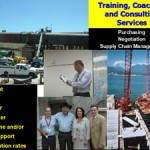Manufacturing: Reminiscence or Renewal in the US?
From more than half of our economy after WW II to a relative pittance in 2010
In the “Insights column” of the November 2010 edition of Supply Chain Management Review Dr. Larry Lapide of the Massachusetts Institute of Technology (MIT) aroused my long slumbering interests in manufacturing. His story, “Manufacturing with a Capital “M” struck a reminiscent chord about the heady manufacturing days that drove this economy not so many decades ago.
As a baby boomer growing up through the 50s and 60s in New England, one of my earliest memories is of a huge five story mill being torn down. That image was replicated hundreds of times over subsequent decades. Most of those once proud centers of huge employment that made goods for the US and the world have been converted to banal uses never intended like office condominiums and residences.
The demise of US manufacturing has taken with it millions of jobs. It has also erased some national security capability and not just in terms of hardware. Lapide points out in his piece that “knowledge, expertise and prowess” have moved overseas with our manufacturing jobs. As examples, he cites a US apparel maker who had to hire Chinese staff to move a manufacturing plant from China to Mexico and foreign petroleum engineers who were hired for drilling in the US due to lack of talent at home.
Where are we going as a country with manufacturing?
The US once manufactured everything. Breweries once made their own beer kegs and glass manufactures had their own machine shops. Those ancient behemoths of manufacturing that once crowded every watercourse in this country first moved south, then south of the border, then overseas. To bring manufacturing back within our borders, two enormous challenges will take gargantuan efforts to overcome.
- Price or external economics
- Government policy or internal sabotage
Price or external economics
The price of goods manufactured in low cost Asian countries is beginning to rise. An inflection point may come when the rising labor prices in particular, combined with doubts about quality and reliable supply and other costs affects the Total Cost of Ownership curve.
That inflection point is predicted in some quarters to arrive in 2015. It can arrive much faster if death or personal injury claims arise from toxic or unsafe products. This has happened with regularity, particularly as concerns China. What is more, the thriving Asian economies are experiencing growing pains as labor unions and even western customers such as Hewlett Packard at its multiple FoxConn plants demand better wages and conditions. Many western businesses are demanding environmentally friendly manufacturing practices, which is beginning to level the field with western firms.
Government policy or internal sabotage
What is worse, reprehensible anti business government policies have driven and continue to drive business off shore. Policies that would result from Cap & Trade and EPA ruling by fiat are business killers. This is to say little of the current administration’s execrable take-over of auto manufacturers, coupled with expropriating the bond holders positions in favor of the unions that contributed to business failures creates a very hostile environment for business in general and manufacturing in particular.
Quo vadis?
Up until the Industrial Revolution of the 18th Century, business was far more agrarian. Since then , we have arrived at the point that even the agrarian economy is industrialized. Robert Louis Stevenson said long ago, “Everyone lives by selling something”. Today’s version of that adage should be, Every one lives by making something” whether that something is a folding carton, a brick, a pharmaceutical tablet, a rifle, or a software program,
For those who recall the nostalgic days of manufacturing and would like to contribute to the cause in intellectual or monetary ways, please visit the Manufacturing Executive The Global Community for Manufacturing Leadership

